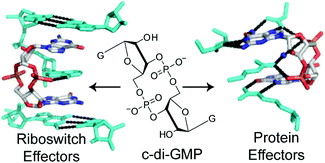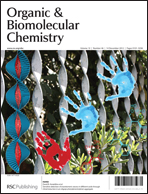The bacterial second messenger c-di-GMP: probing interactions with protein and RNA binding partners using cyclic dinucleotide analogs
Abstract
The ability of bacteria to adapt to a changing environment is essential for their survival. One mechanism used to facilitate behavioral adaptations is the second messenger signaling molecule bis-(3′–5′)-cyclic dimeric guanosine monophosphate (c-di-GMP). c-di-GMP is widespread throughout the bacterial domain and plays a vital role in regulating the transition between the motile planktonic lifestyle and the sessile biofilm forming state. This second messenger also controls the virulence response of pathogenic organisms and is thought to be connected to quorum sensing, the process by which bacteria communicate with each other. The intracellular concentration of c-di-GMP is tightly regulated by the opposing enzymatic activities of diguanlyate cyclases and phosphodiesterases, which synthesize and degrade the second messenger, respectively. The change in the intracellular concentration of c-di-GMP is directly sensed by downstream targets of the second messenger, both protein and RNA, which induce the appropriate phenotypic response. This review will summarize our current state of knowledge of c-di-GMP signaling in bacteria with a focus on protein and RNA binding partners of the second messenger. Efforts towards the synthesis of c-di-GMP and its analogs are discussed as well as studies aimed at targeting these macromolecular effectors with chemically synthesized cyclic dinucleotide analogs.

- This article is part of the themed collection: Nucleic acids: new life, new materials

 Please wait while we load your content...
Please wait while we load your content...